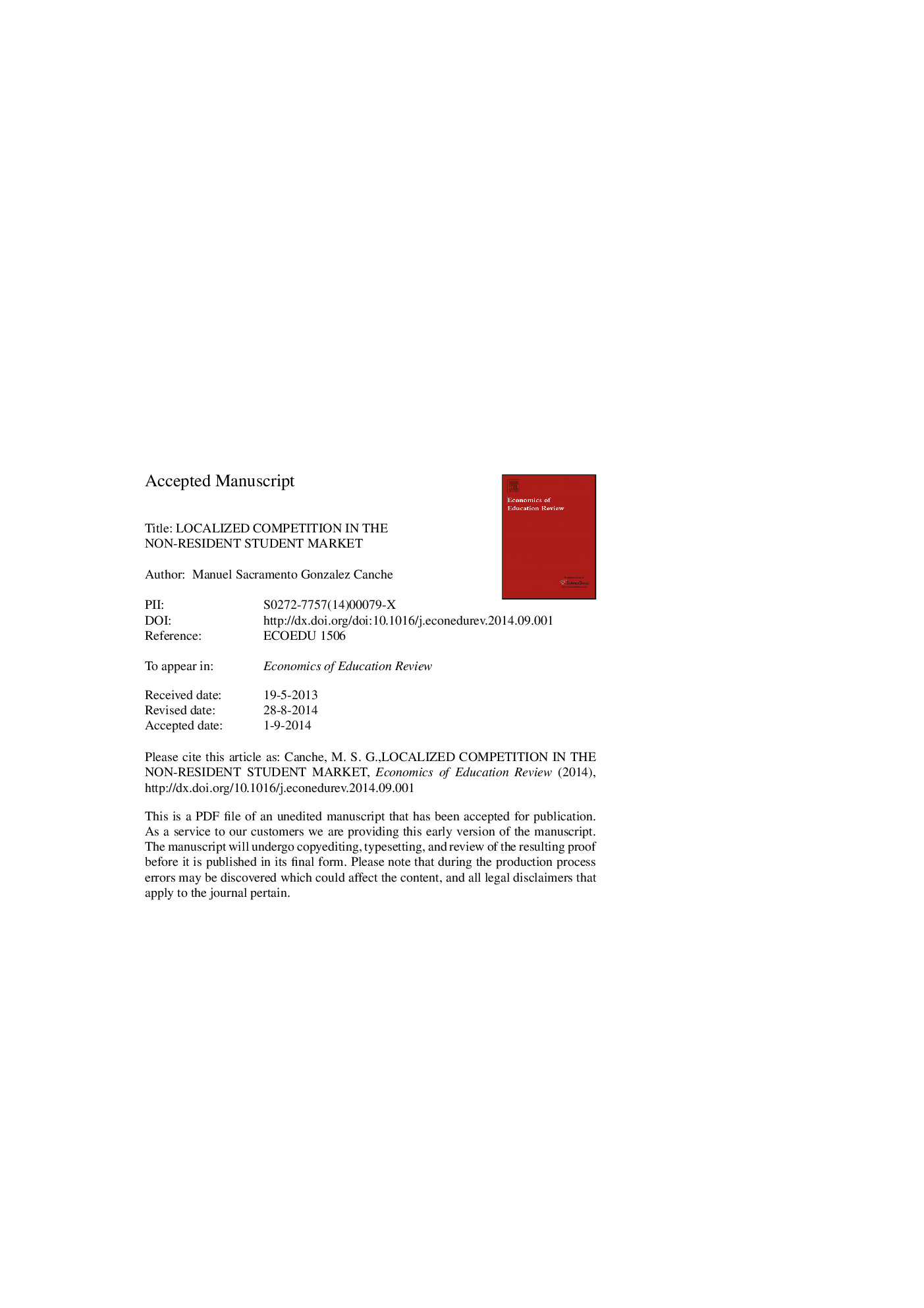| Article ID | Journal | Published Year | Pages | File Type |
|---|---|---|---|---|
| 6840877 | Economics of Education Review | 2014 | 44 Pages |
Abstract
The non-resident student market brings monetary resources to colleges and universities in the U.S. Previous research on price-setting has been predominantly limited to public institutions. This study offers geospatial indicators to capture local competition and influence from public and private 4-year not-for-profit colleges to attract non-resident students. Utilizing a dataset built from federal, state, and institutional information, the 2011-2012 non-resident tuition prices of 1780 institutions across the contiguous U.S. were modeled. Four different neighboring specifications were used to measure the influence of the 1st, 5th, 10th, and 20th closest institutions. The findings support that localized competition and influence exists. Institutions use variations in their tuition prices to compete locally and remain a marketable option for non-resident students. Heterogeneous neighboring structures affect tuition setting above and beyond spatial dependence. Institutions' tuition price-setting benefit the most by competing against doctoral/research institutions. Fixed-effects and HLM techniques were incapable of handling spatial dependence.
Related Topics
Social Sciences and Humanities
Economics, Econometrics and Finance
Economics and Econometrics
Authors
Manuel Sacramento Gonzalez Canche,
